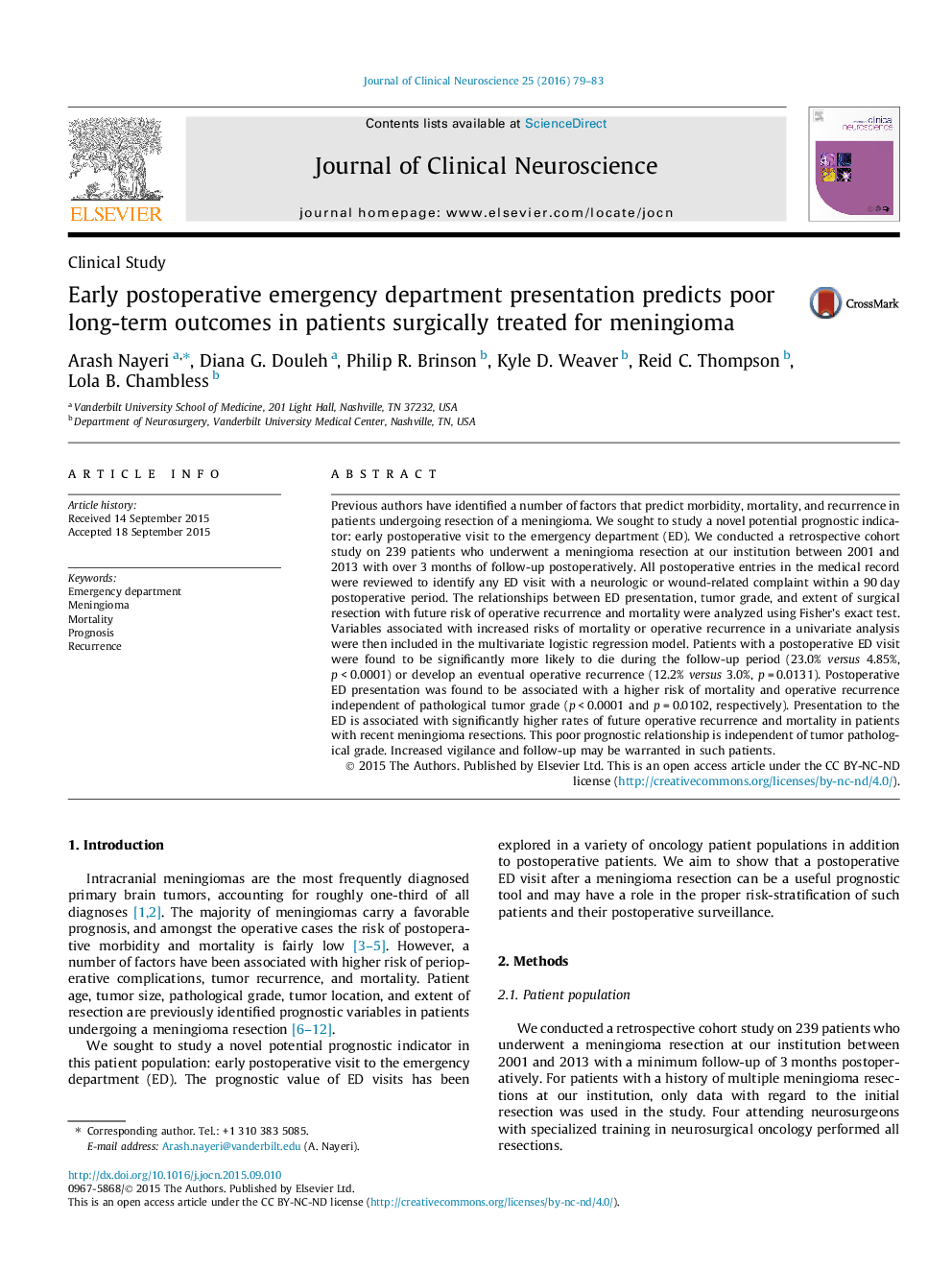| Article ID | Journal | Published Year | Pages | File Type |
|---|---|---|---|---|
| 3058545 | Journal of Clinical Neuroscience | 2016 | 5 Pages |
Previous authors have identified a number of factors that predict morbidity, mortality, and recurrence in patients undergoing resection of a meningioma. We sought to study a novel potential prognostic indicator: early postoperative visit to the emergency department (ED). We conducted a retrospective cohort study on 239 patients who underwent a meningioma resection at our institution between 2001 and 2013 with over 3 months of follow-up postoperatively. All postoperative entries in the medical record were reviewed to identify any ED visit with a neurologic or wound-related complaint within a 90 day postoperative period. The relationships between ED presentation, tumor grade, and extent of surgical resection with future risk of operative recurrence and mortality were analyzed using Fisher’s exact test. Variables associated with increased risks of mortality or operative recurrence in a univariate analysis were then included in the multivariate logistic regression model. Patients with a postoperative ED visit were found to be significantly more likely to die during the follow-up period (23.0% versus 4.85%, p < 0.0001) or develop an eventual operative recurrence (12.2% versus 3.0%, p = 0.0131). Postoperative ED presentation was found to be associated with a higher risk of mortality and operative recurrence independent of pathological tumor grade (p < 0.0001 and p = 0.0102, respectively). Presentation to the ED is associated with significantly higher rates of future operative recurrence and mortality in patients with recent meningioma resections. This poor prognostic relationship is independent of tumor pathological grade. Increased vigilance and follow-up may be warranted in such patients.
